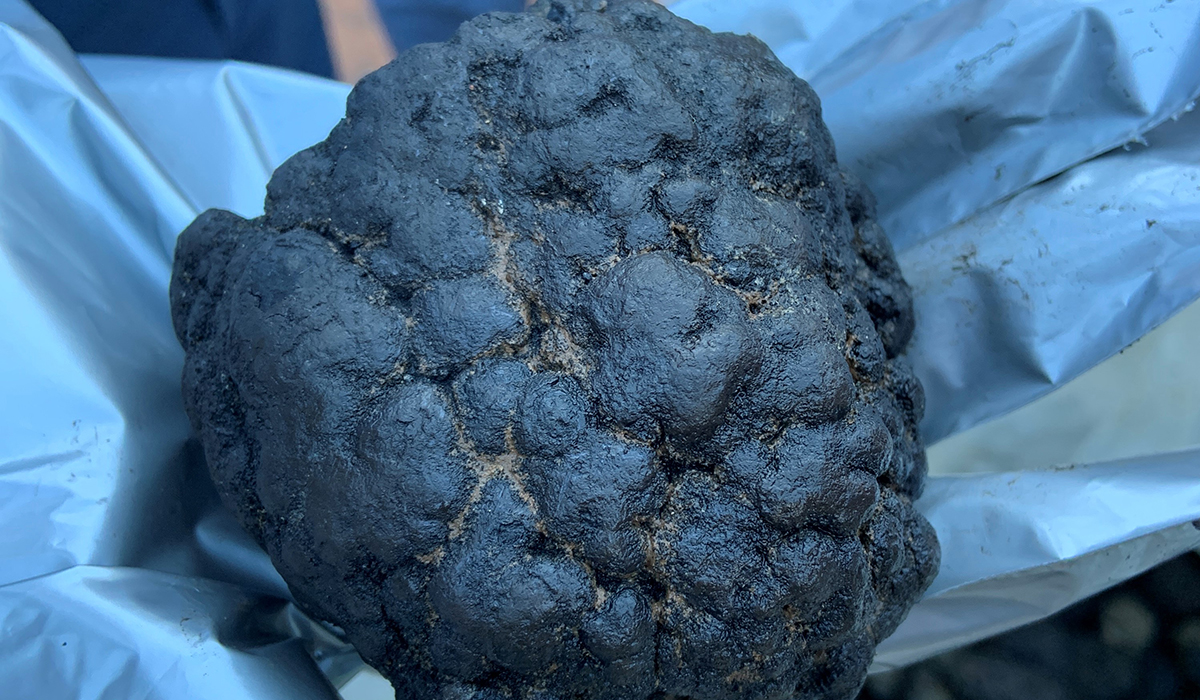Texas A&M Oceanographer Joins Deep-Sea Mining Environmental Impact Assessment
Dr. Jessica Fitzsimmons will join researchers from the University of Hawaii School of Ocean and Earth Science and Technology and the Japan Agency for Marine-Earth Science and Technology to assess the potential impacts of deep-sea mining in one of the largest studies of its kind to date.
Dec 10, 2020

A new international research effort is setting out to complete one of the largest environmental assessments, both in scope and scale, ever conducted in the ocean. Dr. Jessica Fitzsimmons, associate professor in Texas A&M University’s Department of Oceanography, is part of the international team of researchers, which is working to establish a baseline understanding of environmental and ecological processes throughout the water column from the sea floor to the ocean surface.
The environmental impact assessment is funded by DeepGreen Metals, Inc., and is one of the biggest obstacles to gaining a mining license for polymetallic nodule mining in international waters from the United Nations’ International Seabed Authority. The company has interests in extracting metals such as copper, cobalt, zinc, and manganese from polymetallic nodules on the seafloor, and has invested over $3 million in the water column assessment to date, more than $300,000 of which has been granted to Fitzsimmons at Texas A&M University.
The environmental assessment will be a collaboration, led by researchers from the School of Ocean and Earth Science and Technology (SOEST) at the University of Hawai'i at Manoa with contributions from researchers at the Japan Agency for Marine-Earth Science and Technology (JAMSTEC) and Fitzsimmons and her team at Texas A&M.
“I'm a chemical oceanographer who studies trace metals in the open ocean; as you might expect, mining for these metals in the bottom of the ocean is likely to change metal inventories in seawater,” Fitzsimmons says. “I’m on the chemical oceanography team looking at metals, nutrients, contaminants, carbonate chemistry, and organics that might be released through resuspension of seafloor sediments into the overlying water column.”
The company has been granted exploration rights by the International Seabed Authority for certain tracts of ocean in an area of the Pacific Ocean near Hawaii called the Clarion-Clipperton Zone (CCZ). Numerous other companies have also been given exploration rights in this area.

What The Sea Floor Holds
The metals of interest are found in deposits sitting on the seafloor, in formations known as polymetallic nodules, which are roughly tennis ball shape and size. The research team will collect nodules from the seafloor, using a large underwater harvester connected to a ship on the surface, about 4,300 meters above, by riser pipes and a tether.
On the ship, the ore is then separated from seawater and sediment and the altered seawater and sediment is then discharged back into the ocean at intermediate depths yet to be determined. A critical understanding of the biological, geological, and chemical processes taking place from beneath the seafloor all the way up to the surface is essential to assess the potential impacts of this kind of operation.
Fitzsimmons’ role in the research will be assessing the potential chemical effects of the redeposited discharge plume of sediment and seawater on the water column. Another potential concern is the resuspended sediment that is kicked up in the wake of the harvester on the seafloor.
“There is a strong debate in the international community of what depth to release the separated sediment and water after harvesting the nodules,” Fitzsimmons says. “If released at the surface, it could affect organisms that live at the surface and if released on the bottom, it could heat-shock any remaining organisms living there.” This heat-shock would occur because the water is warmed during processing, while the ocean bottom waters, where it would be released, are near-freezing.
Determining the optimal depth for redepositing the plume will be just one of multiple parts of Fitzsimmons’s research. She will also investigate nutrients, toxins, and pH effects in the water column. Their first baseline (pre-mining) research expedition to the CCZ is planned to launch in February 2021, with follow-up expeditions in October 2021 to assess seasonal variability in the region under normal conditions. Investigations into the impacts from mining operations could begin in 2022.
Foundations for Future Research and Development
One of Fitzsimmons’s colleagues at Texas A&M, Dr. Jason Sylvan, explains that the recent increased interest in deep sea mining for these rare earth metals is due to the shortage of such resources on land. Rare earth metals are regularly used in electronics like computers, cell phones, and more recently electric vehicle (EV) batteries.
“Most funding agencies are not going to fund this type of project that is connected to industry,” Sylvan says. “They are essentially studying a very normal environment, which I think is valuable for getting that baseline data.”
DeepGreen Metals, Inc. has created an opportunity for scientists to study large areas of open ocean that have not been well studied in the past. The potential for these resources to be used in the production of green technologies like EV and green energy batteries is also a point of emphasis for the company.
“It’s exciting for Texas A&M because Fitzsimmons, and the department by association, is doing work that is interesting scientifically, but also socially and economically,” Sylvan says. “It’s important work and I’m glad she’s doing it.”
The transparency and independence of this research is important to Fitzsimmons and her colleagues. Fitzsimmons also expresses appreciation for the opportunity to conduct science that can have impacts on policy decisions that can directly affect society.
Other researchers also involved in this project are Dr. Jeffrey Drazen (Lead Investigator), Dr. Glenn Carter, Dr. Sara Ferrón, Dr. Erica Goetze, Dr. Christopher Measures, Dr. Brian Popp and Dr. Angelicque White from University of Hawaii Mānoa (SOEST); Dr. Mariko Hatta and Dr. Dhugal Lindsay from JAMSTEC.
For more on the planned impacts assessments, read the announcements from DeepGreen, SOEST at the University of Hawai’I at Manoa, Florida State University and Heriot-Watt University.
By Justin Agan ‘18

